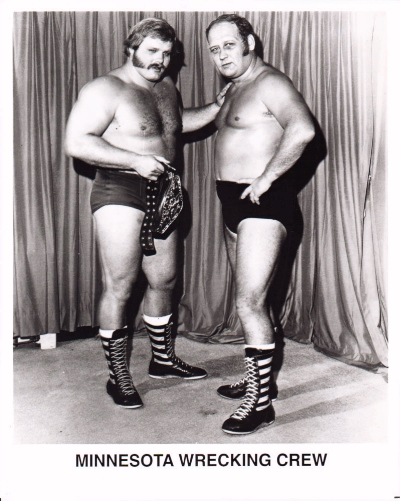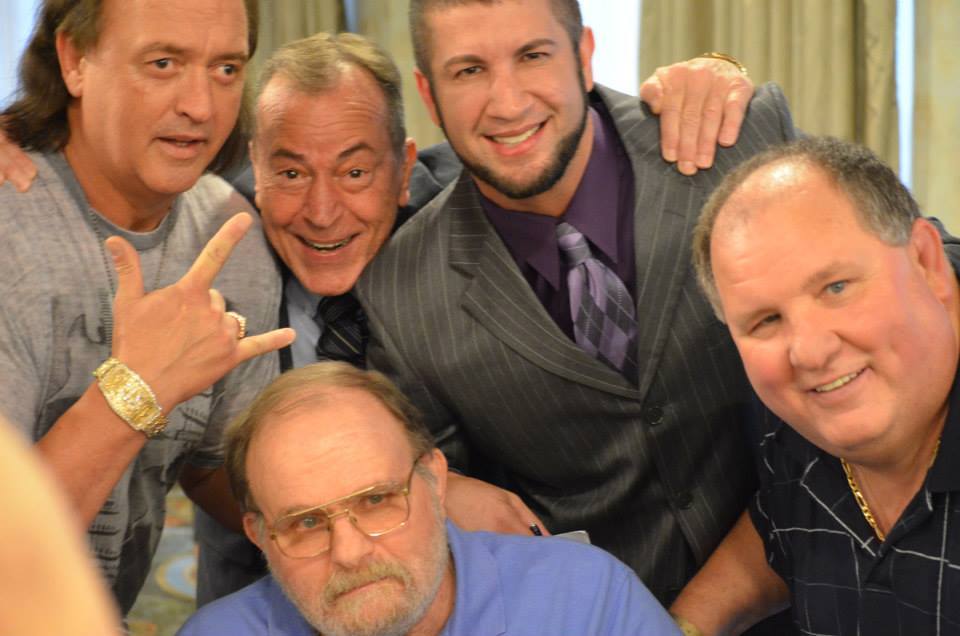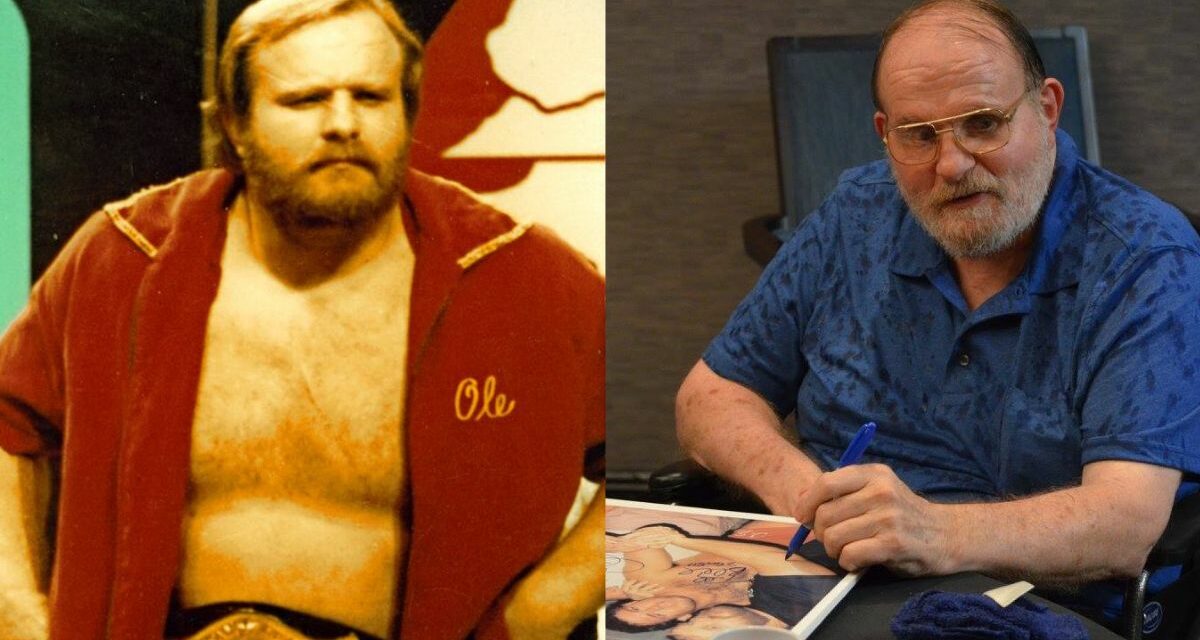How to sum up the life and times of Alan Robert Rogowski, better known to wrestling fans as Ole Anderson?
Start with the adjectives: Grumpy, curmudgeonly, brilliant, grouchy, talented, stubborn, Horseman, direct.
But one word comes up more than any other when talking about Ole.
One day Paul Jones was chatting with his friend, the late NWA champion Jack Brisco. As Jones recalled: “I said Jack, ‘Let’s talk about some of the assholes we had in our business.’ He said, ‘OK, Paul you start off.’ I said, ‘Ole Anderson.’ ‘Stop right there Paul; let’s talk about something else because that’s the only name I had too.’ I told Ole that. Ole laughed and said, ‘I like it, I like it.'”
Or as his fictional cousin / nephew / brother Arn Anderson once told Mike Mooneyham: “That’s just Ole … Ole never bothered me with that gruff exterior because I could see past it. And that’s who he really is, and that’s the guy that I know. Ole’s just a cantankerous, mean, tough SOB. And that’s all you can say about Ole.”
It was sport to find fault in Ole Anderson, especially when you were a wrestler and he was the matchmaker/booker — which he did rather well.
But you couldn’t knock his in-ring skills.
“Anderson knew the business well,” wrote Jack Brisco in his autobiography. “He was a good hand and a hell of a worker. I can’t remember having a bad match with him.”
In the posting of Anderson’s death on February 26, 2024, Greg Price of NWALegends.com, wrote:
Ole Anderson had few equals in wrestling. He was tough as nails, could handle himself in any situation. Brutally honest, which offended some. Endeared him to others. An incredible mind for the wrestling business. I’m proud to say he was my friend, and I loved him for all the reasons stated above.
Sadly, Ole Anderson left this world earlier today. His legacy will live on forever. Godspeed, my friend.
Rogowski was born September 22, 1942 in Minneapolis. He began wrestling in 1967 as Rock Rogowski in the AWA.
The Anderson tag team came to be in 1966, the Minnesota Wrecking crew, made up of Larry Heiniemi / Lars Anderson and Gene Anderson. Nothing flashy, no gimmicks. No pyrotechnics, no colored tights. Just straight wrestling. The Andersons dominated their opponents, brought a hard-nosed Minnesota work ethic to the ring, and even worked as a three-man crew long before it was fashionable.
In June 1968, Lars and Gene brought in a third Anderson to work in six-man matches against the likes of Johnny Weaver, George Becker, and Sailor Art Thomas. Yet another Minnesotan, Alan “Rock” Rogowski was an acquaintance of Lars from college wrestling circles. Rogowski was born in 1942, went to high school near Minneapolis, and landed at the now-familiar St. Cloud State. After having Danny Hodge rub his face in the mat during training, Rogowski started in the AWA in August 1967.
“Alan got off the plane in Charlotte and I went to pick him up. I said, ‘Your name is Ole Anderson.’ He said, ‘What? Ole Anderson?’ But he was OK with it and away we went,” Lars said in The Pro Wrestling Hall of Fame: The Tag Teams. The trio worked six-man matches, and swapped off as needed in doubles. In late 1968, Lars went back to Minnesota to pursue a singles career, leaving Ole and Gene as the Andersons in the Carolinas. The Andersons held the Atlantic Coast titles three times from 1970 to 1973 and the Georgia belts seven times from 1974 to1977, among other honors. Lars occasionally rejoined them, working as an Anderson brother in Georgia in 1977, 1978, and 1980, when he was in a kin feud against Ole.
Regardless of the combination, the Andersons worked a style that could charitably be called stiff. “Gene had one little deal,” Ole recalled. “He said, ‘When we go out there, we’re going try to work, but we’re going knock the crap out of everybody. We’re just going to make certain that we don’t hurt anybody.’ So that’s why so many of the matches came so close to being a shoot. It would have been easier to have had a shoot.” Their signature was to take a rival and focus on crippling one of his limbs through repeated blows – a simple and impressive storyline. “You talk about believability,” an admiring Stan Lane said. “They would get a guy and keep him over in their little quadrant of the ring and they would get a hold and they’d get a guy’s arm and just keep working that poor guy’s arm. And people would go ‘My God, they’re going to break that guy’s freakin’ arm!'”

Ole and Gene Anderson
The Gene and Ole version of the Andersons probably is most famous for its marathon matches with Paul Jones and Wahoo McDaniel. “It clicked because we beat the hell out of each other. That’s why we drew so much money and everything,” Jones said. “People believed what they saw. Ole liked it because that’s the way he liked to work and that’s the way I liked to work, too.” In one memorable TV angle in June 1975, the Andersons announced they would make any sacrifice to retain their world titles. After some brawling, Ole rammed McDaniel’s head into Gene’s, putting both out “cold” and, in effect, sacrificing his partner for championship glory.
Ole’s stubbornness even extended to his choice of vehicle. In 1975, a car dealer was peddling Cadillacs left and right to wrestlers in the Carolinas, he said. “My understanding was he sold 25 or 26 Cadillacs in about an hour. Even Gene bought one,” said Ole, who was content with his sorry-looking Ford convertible. “I said, ‘You buy that Cadillac for $11,000; I’m going to go down and buy myself a pair of pants for $20. A year from now, your car and my pants will be worth about the same thing, but I’ll have over $11,000 in the bank … Yeah, I was cheap.” Said wrestler Terry Taylor, “Ole was a businessman. He hunkered down and did what he thought was right. I was a huge Ole fan. I loved working with him. You didn’t just flip, flop, and fly; you had to earn it with Ole.”
Yet Gene took no back seat to anyone in the toughness department. “His name was Gene Avon Anderson. I used to get in the ring and say, ‘Ding dong, Avon calling,'” said Don Kernodle, who trained with the Andersons. But Kernodle paid the price for his smart aleck remarks. “He had a grip on him. He could hurt you, brother. He would pull the hair on your chest when you were getting instructions from the referee and it’d about kill you … But he was a sweetheart, too. I loved Gene.”
The Andersons professed disdain for the fans – Gene once told The Globe and Mail of Toronto, “It doesn’t bother me a bit if they don’t like me. It helps pay for my condominium.” But things came to a head in May 1976, when an irate fan in Greenville, S.C. slashed Ole in the chest and arm with a knife as he was leaving the ring. Doctors spent four hours reattaching tendons in Anderson’s arm and put in 100 stitches. In Georgia, with Gene’s young son Brad in the back of the car, a fan sideswiped the Andersons as they were driving from the arena. “I was in the back seat and Dad was saying, ‘Get down, get down.’ Meanwhile, Ole was outside, trying to beat the hell out of the guy,” Brad said.
In October 1981, Gene was hit in the back of the head with a bat swung by Wahoo McDaniel as a gimmick in a match in Shelby, N.C. At the time, no one let on how serious the injury was. The blow affected him for the remaining 10 years of his life, and son Brad could see that his hospitalized father was never the same. “They called it a stroke, but it was an induced stroke because the blood didn’t flow to his brain. It really messed him up. He would get excited and the words wouldn’t come out right, like a stroke victim, but not a real bad stroke victim. That was a big time problem,” Brad said.
Gene appeared in the ring a few times, did some voiceover work, and stayed with the office until its transition to Ted Turner’s company. In the winter of 1990-91, World Championship Wrestling dismissed Ole as booker and Gene was sent out the door, as well. Gene hooked on with the Mecklenburg County, N.C. sheriff’s office for the last months of his life. At 52, he had lost weight and started exercising regularly as part of his regimen. But, on Oct. 31, 1991, Gene died of heart failure while attending a law enforcement class at a community college in Huntersville, N.C. “It’s just my opinion, but I strongly believe it. Wrestling was all that he had known his whole life. He died of a broken heart,” Brad Anderson said.
Ole and Arn Anderson joined forces in 1985 as part of the legendary Four Horsemen. Arn, or Marty Lunde, was supposedly a nephew, but was regarded as a mat tactician in the Anderson line. They held the National tag team title but Ole has generally snubbed the Horsemen days. “The only wrestling I thought was worth a shit was the tag team wrestling Gene and I did … Gene was everything to me.”
In 2003, Ole wrote an autobiography called Inside Out: How Corporate Wrestling Destroyed America that is a hyper-opinionated and fascinating look at his career as a wrestler and booker.

Ole Anderson is surrounded by Robert Gibson, Tommy Young, Shane Helms, and Don Kernodle in 2014. Photo by Peggy Lathan
He made numerous appearances, especially at the NWA Legends fan fests in Charlotte, but never ventured far beyond those events. Ole was not a part of the Four Horsemen faction inducted into the WWE Hall of Fame.
There have been numerous health challenges over the last few years for Ole Anderson.
He was predeceased by his parents, Robert Joseph Rogowski and Georgiana Bryant; and his brother Robin Rogowski. He is survived by his girlfriend Marsha Cain, and his seven children: Bryant Rogowski, Christian Rogowski, Fortune Evans, Aaron Rogowski, Ethan Rogowski, Galen Rogowski and Dana Armstrong.
— with files from Steve Johnson
EDITOR’S NOTE: The family information was added post-publication.
RELATED LINKS
Professor Ole Anderson lectures on wrestling of today and yesteryear

